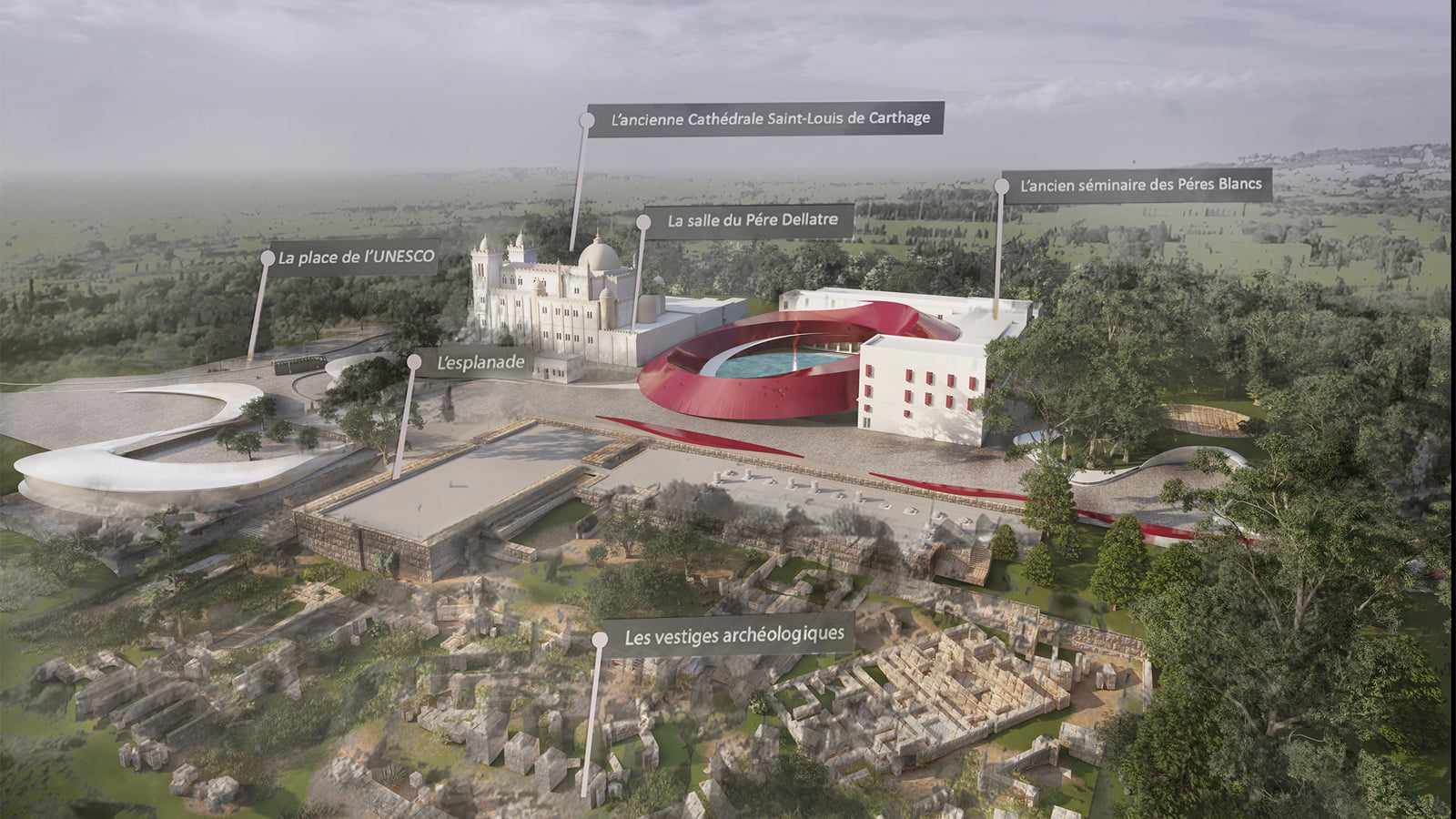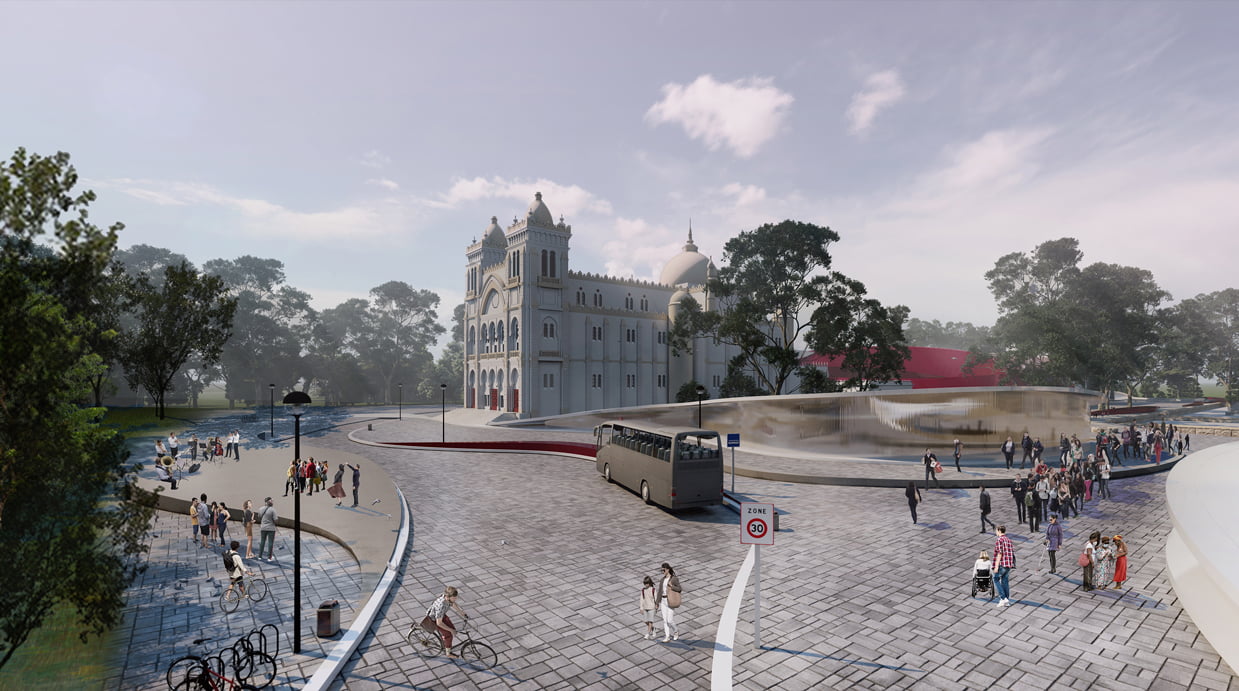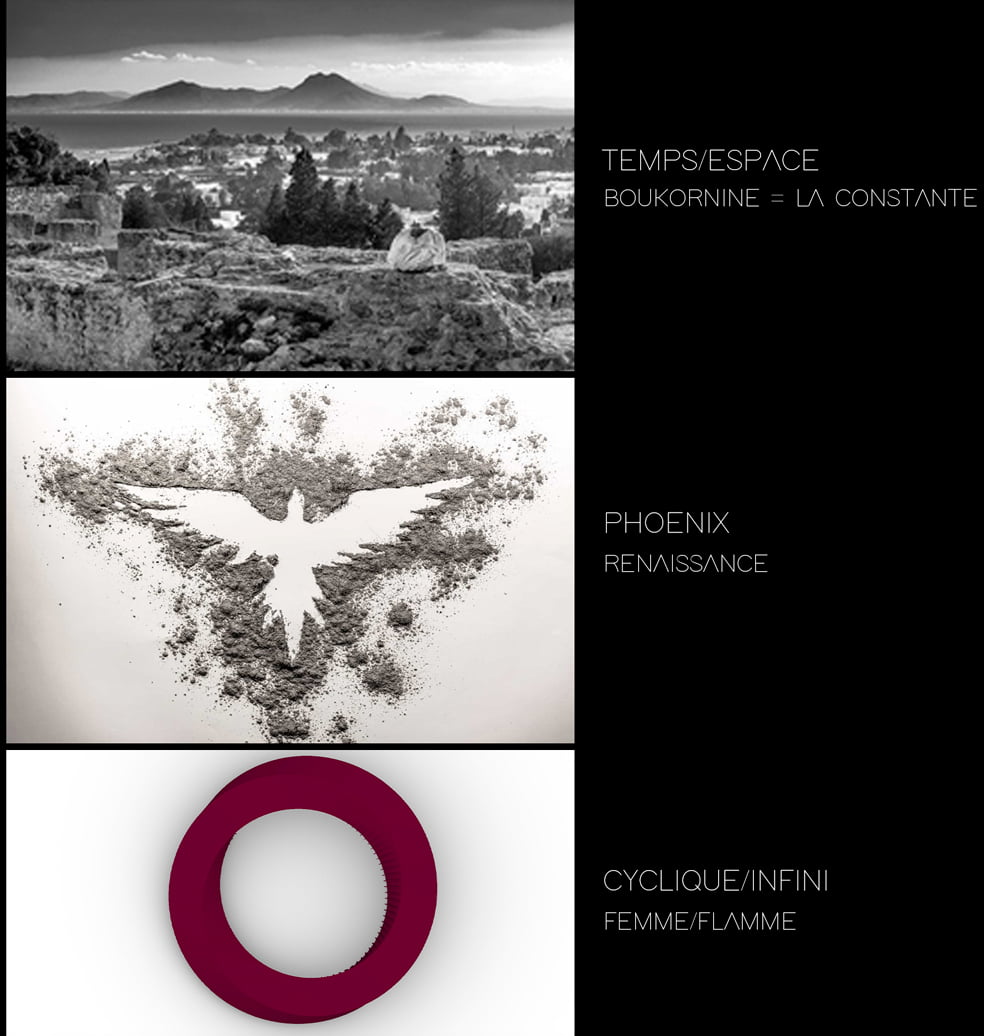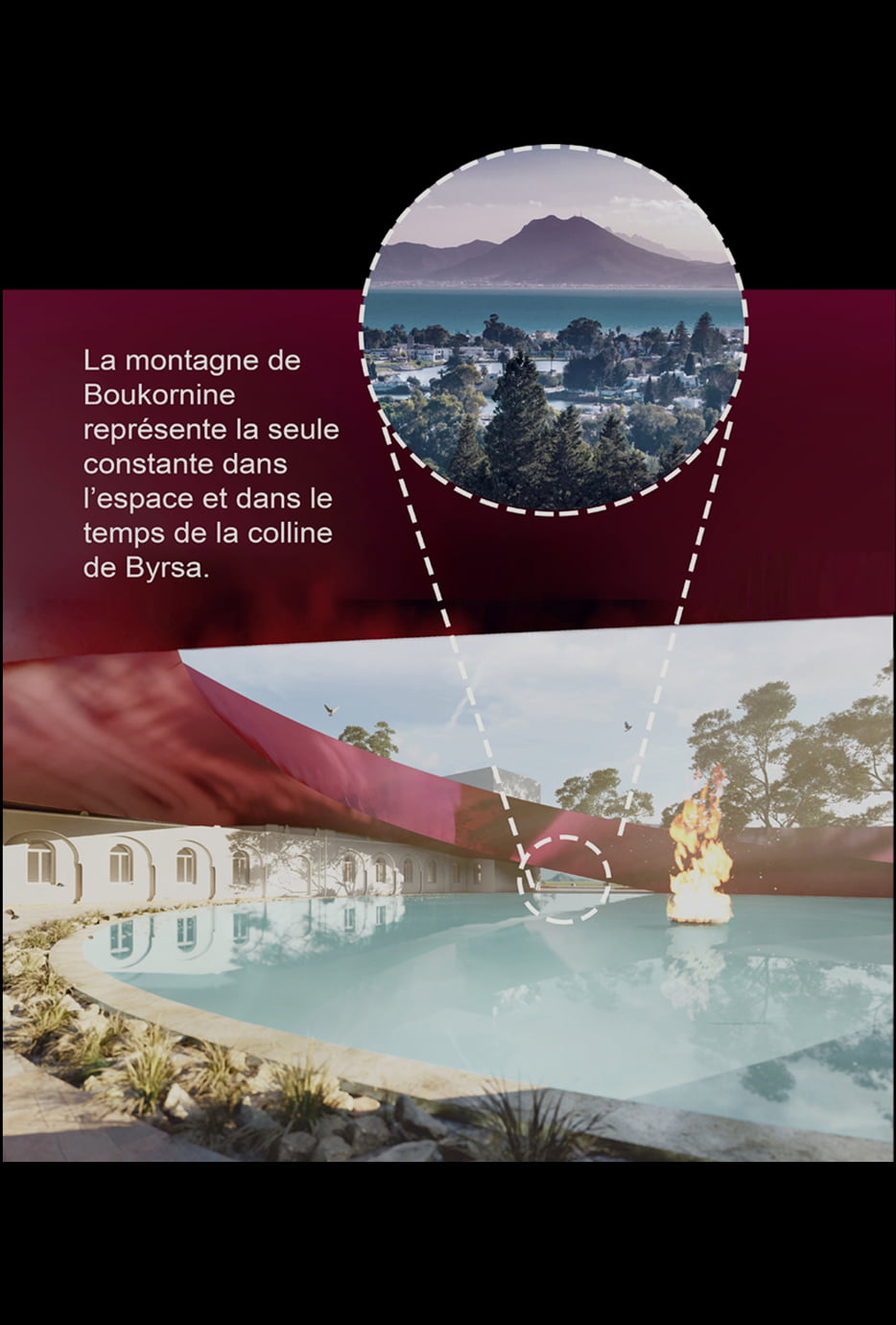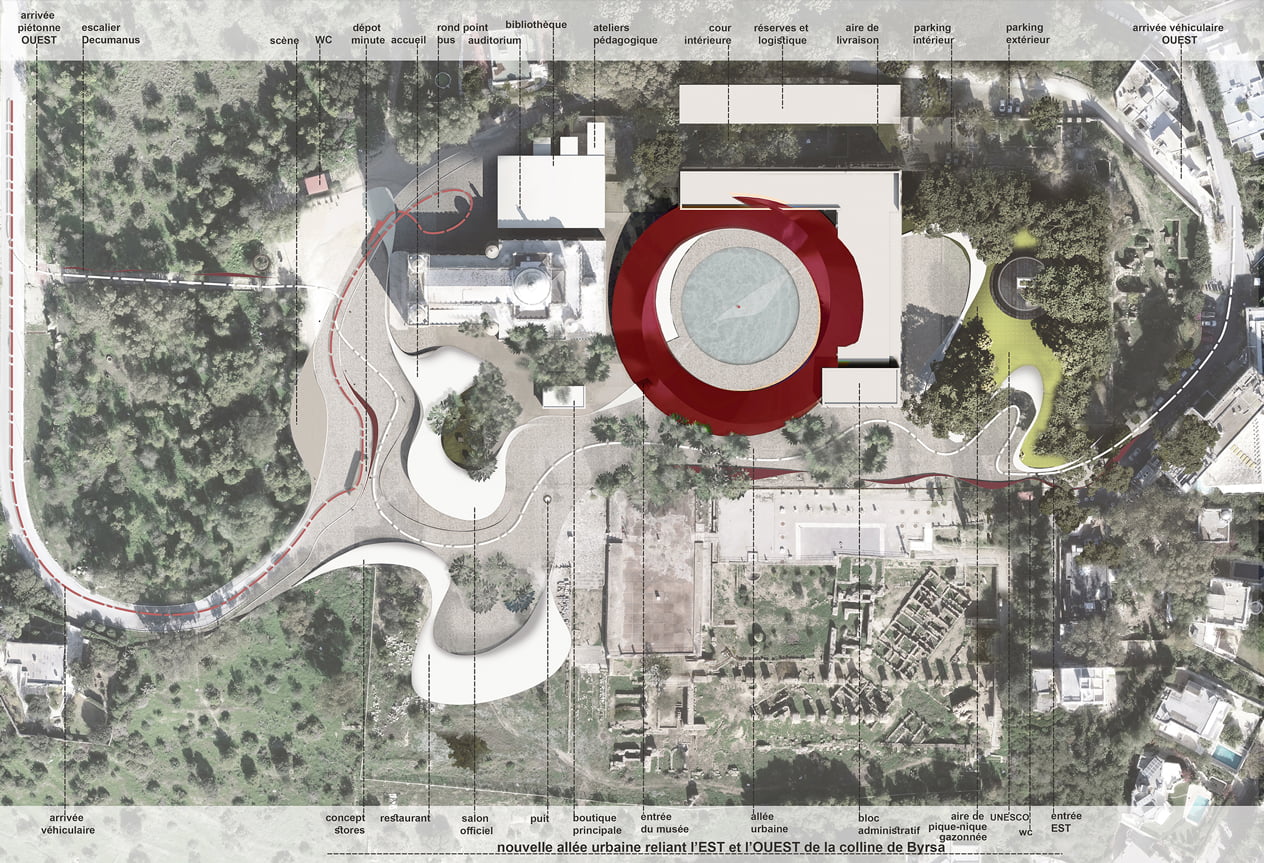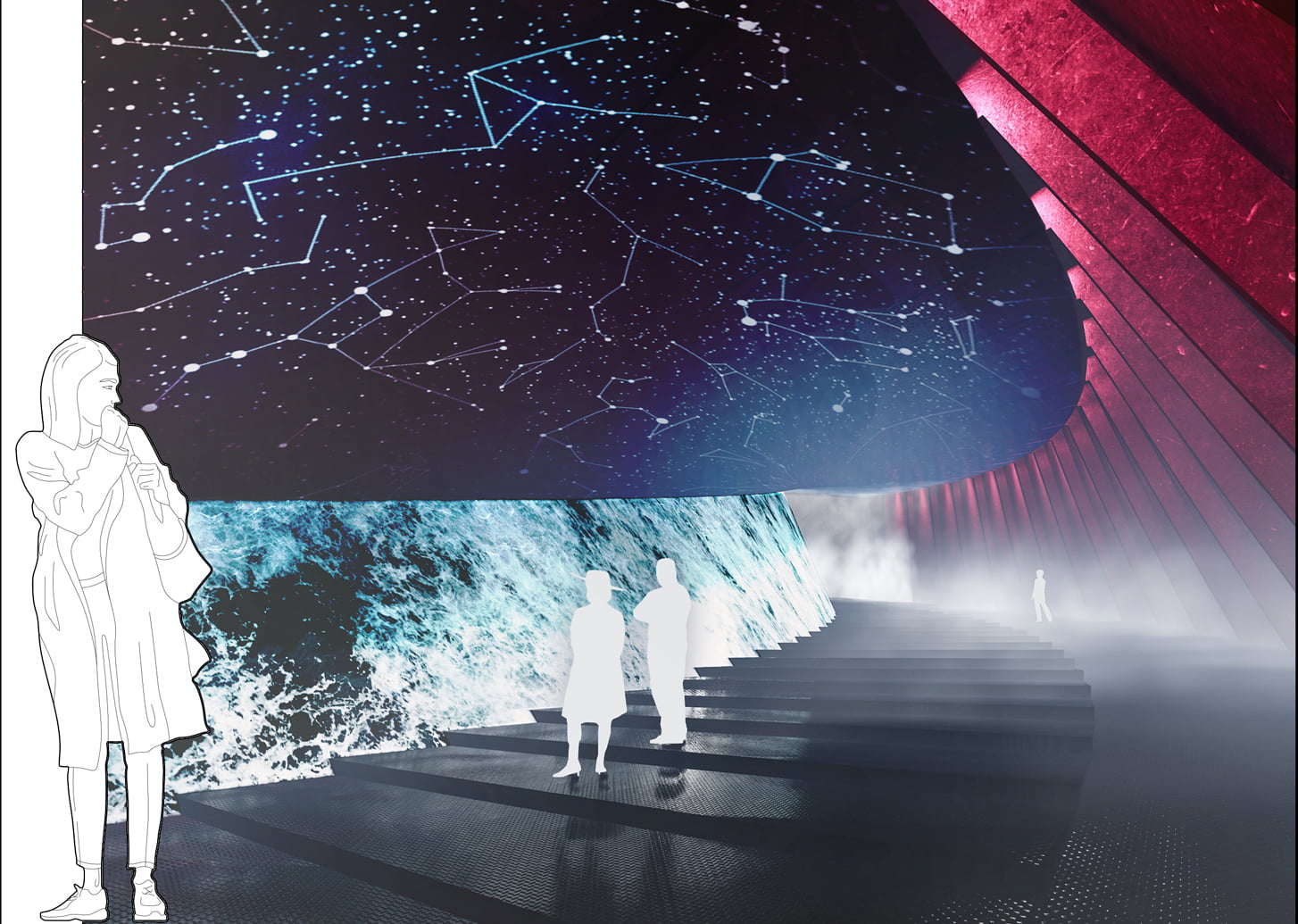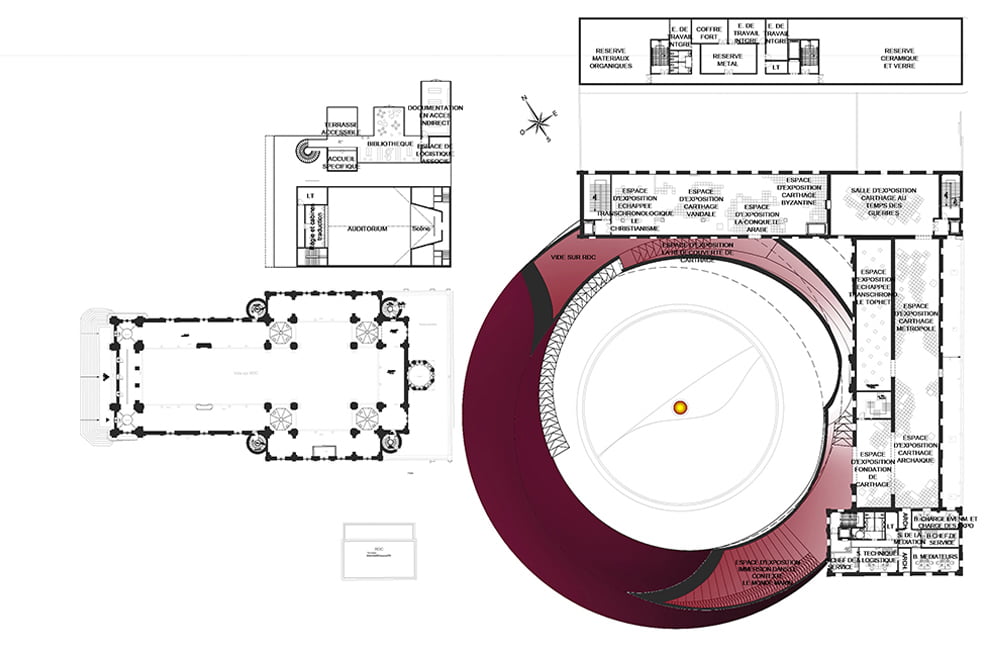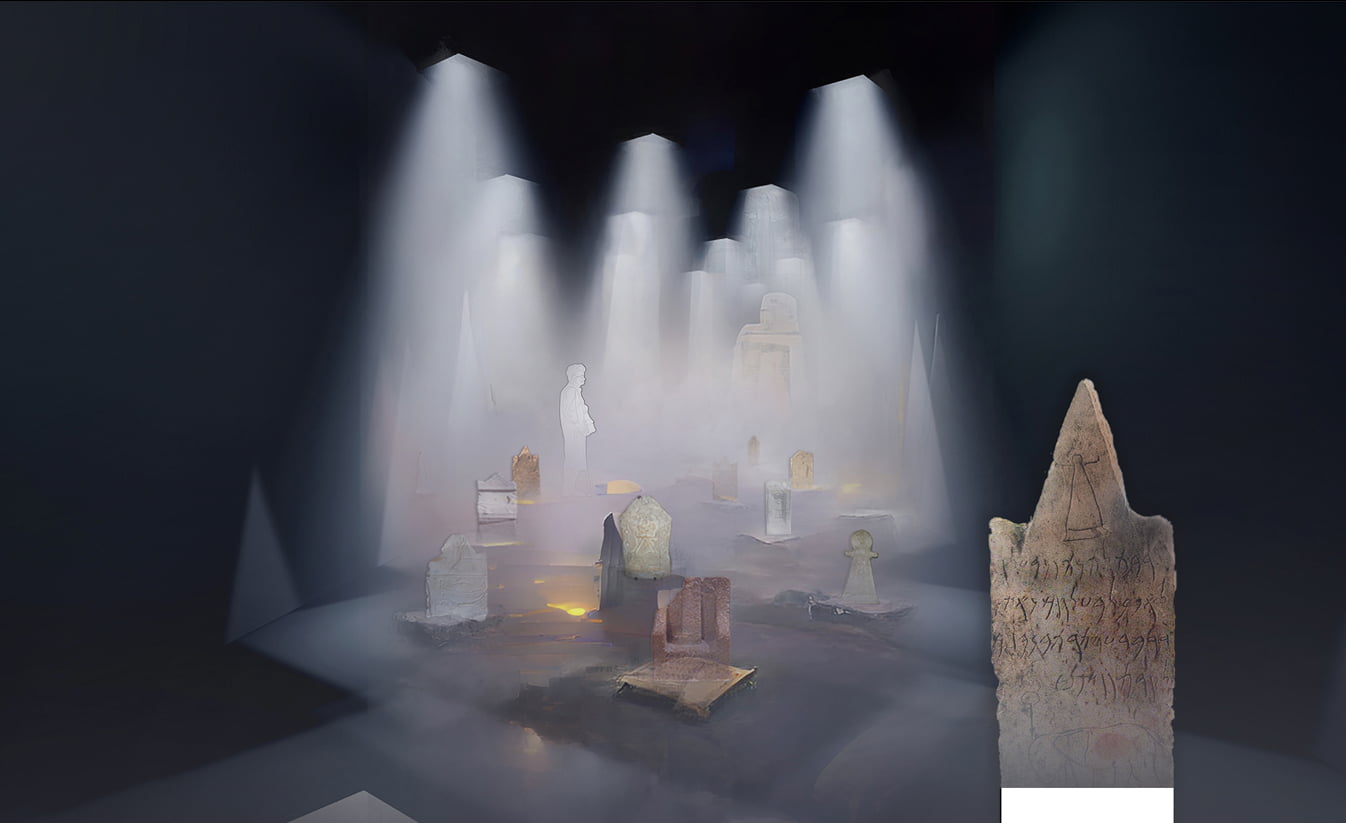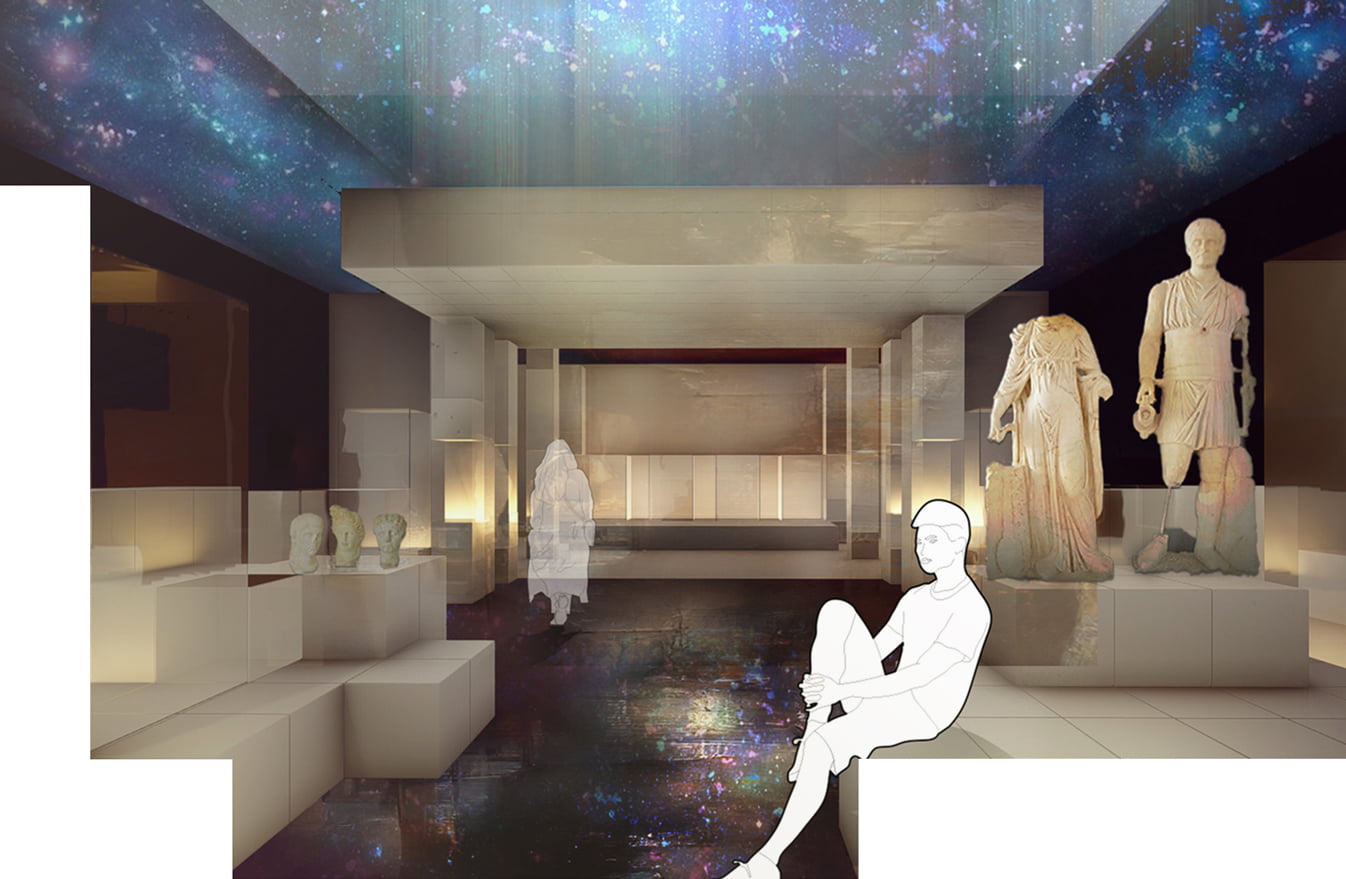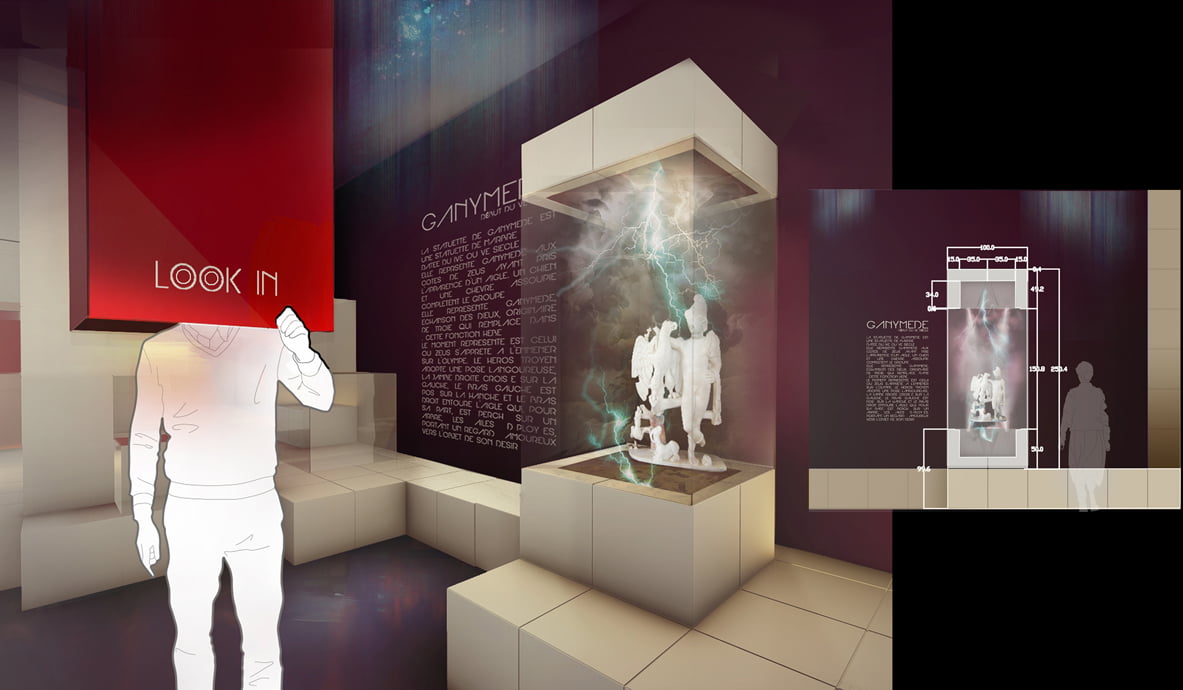
Of Becoming
International competition for the requalification of the Byrsa Acropolis and the rehabilitation of the National Museum of Carthage
Location: Gammarth, Tunis
Project Duration: 2023
Client: Ministère des affaires culturelles
Status: Competition
Project Summary
THE ETERNAL RETURN and the Renaissance of CARTHAGE
The act of BUILDING, in the year 2023, for a civilization of 3000 years founded by a Woman. This project presents itself as a response to the issue of requalifying the hill of BYRSA in its historical, urbanistic, and architectural vocation.
THE ETERNAL RETURN is a quest for what could be the greatest potential or the greatest challenge of an intervention in the year 2023, glorifying Carthaginian civilization.
POSITIONING THE BYRSA HILL or the chosen act to settle on the site? Throughout previous eras, the occupation of the site was dominated by the natural context. The revaluation of existing heritage. The architectural act that marks the intervention (the requalification) in the year 2023 is nothing but a fluid architectural imprint, both significant and signified, further appropriating the hill.
• PHOENIX: The eternal cycle of rebirth. The renaissance of CARTHAGE from its own ashes, much like a Phoenix. The civilization that rises again after its destruction. The infinite cyclical movement.
• MOBIUS, the museographic journey, is an imposing and complex form that identifies the entire project. The idea of the promenade: a transition between the exterior and the interior. The idea of the loop: the cyclical path that retraces the history of CARTHAGE in time and space.
• PURPLE: Chromatic identity of the entire museum. A color discovered by the Phoenicians that marked the golden age of CARTHAGE. The choice of this identity directly and essentially refers to its origin in Carthaginian civilization.
WOMAN AND FLAME:
• The MOBIUS, a circle symbolizing femininity.
• CARTHAGE is founded by a Woman.
• The symbolism of the form.
• Flame, the memory of time.
• BOUKORNINE: The mountain, the sole constant in time and space.
• The eternal element that has lived through history and continues to do so.
• The only constant in the landscape, a witness to the millennial history of the hill.
URBAN AND LANDSCAPE APPROACH New urban alley connecting the EAST and the WEST of the BYRSA hill. The concept of integration into urban space is manifested in this project by a master idea:
an OPEN project of and by its components.
• Bringing life/city to the projects through urban response.
• The project moves from an exclusive state to an inclusive project.
• An open, unenclosed project that connects Carthage BYRSA to Carthage Amilcar (TGM station).
The LANDSCAPE is approached in this project by a specific flexible layout that encompasses the entire site’s treatment of the Byrsa acropolis.
• Emphasizing and favoring public space.
• An urban alley. • A new axis in the city.
• Further promoting mobility within the outdoor museum tour.
• Defining the entire project, built and non-built, as a performing entity.
SCENOGRAPHIC PROJECT
The scenographic intervention focuses on the idea of immersion. Creation of a “narrative space” that is both playful, evocative, and educational. SPACE – SPACE:
The abstraction of walls and existing limits through an illusory treatment of coatings and light allows the visitor to feel in an extended and vast space detached from geometric reality.
SPACE – MODULE: Creation of a volumetric module to structure the museographic staging.
OBJECT – VISITOR: The visitor can thus focus on the exhibited artifacts and the “narrative scenes” set up. The lived, the perceived, and the imagined.
OBJECT – OBJECT: The exhibition of archaeological elements aims to stage jugs, masks, statues, etc., in suggestions of daily scenes, giving life to the revisited history.
OBJECT – MODULE: The arrangement of elements according to modules offers different levels of exposure. A change of perspective for each piece also allows for some interaction with the archaeological element in certain cases.
Allrights reserved – Hasni and Hasni Architects 2024

